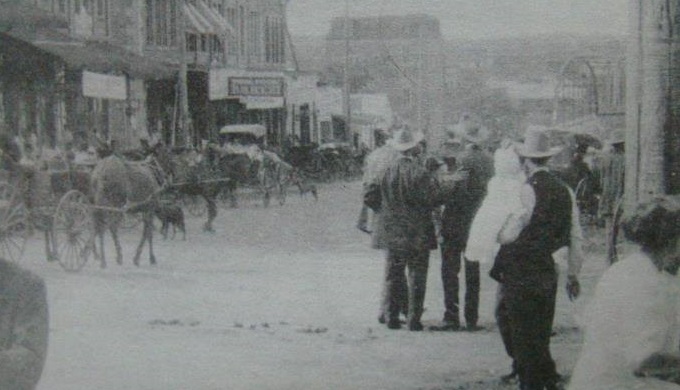The Texas Hill Country’s history spans centuries, and Llano County history is no exception. Today’s residents may not know about the rich history under their feet. From native tribes to missionaries to immigrants, Llano County’s previous residents contributed much to shaping the landscape and culture of the area known today.
History
Llano County: Steeped in a History That’s Not Forgotten
Earliest Inhabitants

Photo: Wikimedia Commons
Llano County history extends to the days before Europeans and their descendants came to Texas. When the Spaniards settled the area, they discovered Tonkawa Indians hunting and gathering in the area, but this native group did not create permanent settlements. The Spaniards constructed missions in the region, which gave the Tonkawa support against the Comanches at the borders of their area. Some historians suggest that the Tonkawa invited the Spanish into the area to prevent Comanche invasion. This strategy did not last, though. By the 1800s, Comanches invaded the region, driving out the Tonkawa. Texas settlers and Comanches frequently battled over central Texas for years, including a skirmish at Enchanted Rock in 1841.
First Settlements

Photo: Wikimedia Commons
Like the Tonkawa, the Comanches did not create settlements in the area, and the Spanish missions served as little more than military outposts with churches. German immigrants created the first official civilian towns in the area. In 1847, their leader John O. Meusebach arranged a treaty with the Comanches in the area to create five settlements in the Hill Country. Castell, at the western edge of Llano County, remains the only one of these five settlements still inhabited today.
Creation of Llano County
By 1856, the same year Castell got its first church, Texas officially created Llano County, when state legislatures split off pieces of Gillespie and Bexar Counties. Just two years later, more than 1,000 people lived there. German immigrants dominated the western half, and Anglo-Americans lived in the eastern portion. Life continued with most people earning their living through farming or ranching.
Peace Comes to Llano County
During and after the Civil War, Llano County’s growth stagnated. It suffered from its location as a distant outpost far from more densely populated areas. Comanche attacks in the years following the Civil War did not help matters. Raiders often sought horses, but occasionally, they killed civilians, too. Residents of the area lived in constant fear of these raiding parties until 1874, when Captain James Moss defeated a group of Comanche raiders on Packsaddle Mountain. The raiders never returned to Llano County after that.
The Boom Years

Photo: Facebook/Ginger Andrews
With a more peaceful frontier, Llano County history shifted to boom years. The area blossomed from the late 1870s almost until the 20th century began. This was the era when ranching and farming dominated the lifestyle of Llano County residents. With safer surrounding areas, people expanded their farms and ranches like never before, and more people came to the county to start new lives.
By 1900, the census counted 7,301 citizens in Llano County, seven times what it had been only 40 years before. During these boom years the county built a new courthouse and jail in Llano, the county seat. Both of which still stand today.
Industry and Population Changes

Photo: Flickr/SMU Central University Library Collection
With the new century, the economy of Llano County changed. Where people once farmed or ranched on the land, they shifted work to granite mining. A handful of unsuccessful iron mining attempts possibly contributed to the declining population during the first two decades of the 20th century. Farmers who once relied on their cotton crops found the fields producing less. A drought in the 1930s, coupled with the Great Depression, magnified the severity of the situation.
Public Works Projects

Photo: Flickr/Jon Lebkowsky
Government intervention during the Depression years with public works projects employed the residents of Llano County. Hamilton Dam, known today as Inks Dam and Buchanan Dam, began construction during the Depression, and several other dams would follow. These dams not only provided jobs but also created lakes that draw tourists to the area today.
Llano County Today and in the Future

Photo: Wikimedia Commons
By the 1960s, the population of Llano County began to rise again. Today, many in the county still rely on farming and ranching with hogs and cattle the top products. Others earn their living through the tourism and hunting industries. Some refer to Llano County as the “Deer Capital of the World” for its outstanding deer hunting grounds. Llano County history helped to shape the county as it is today, and those interested in history can see many historic sites in the county to touch the past that remains in the county’s present.
Sources:



